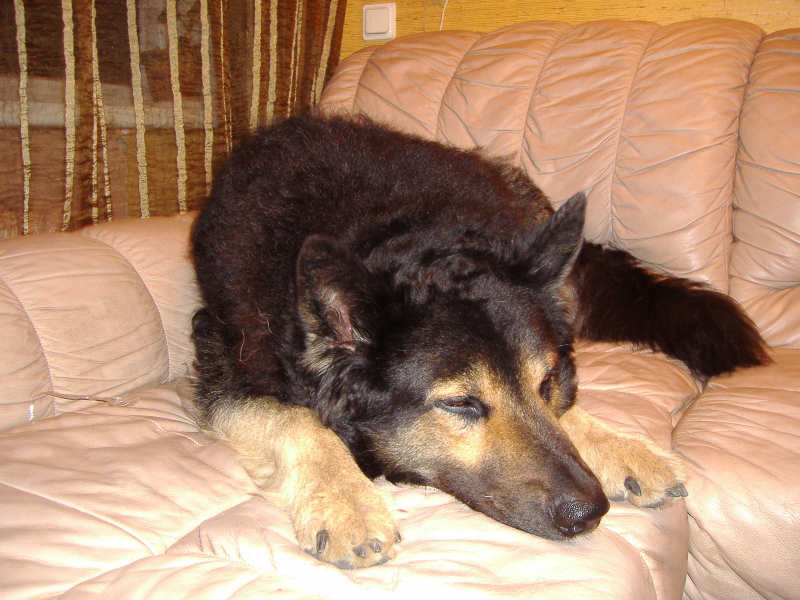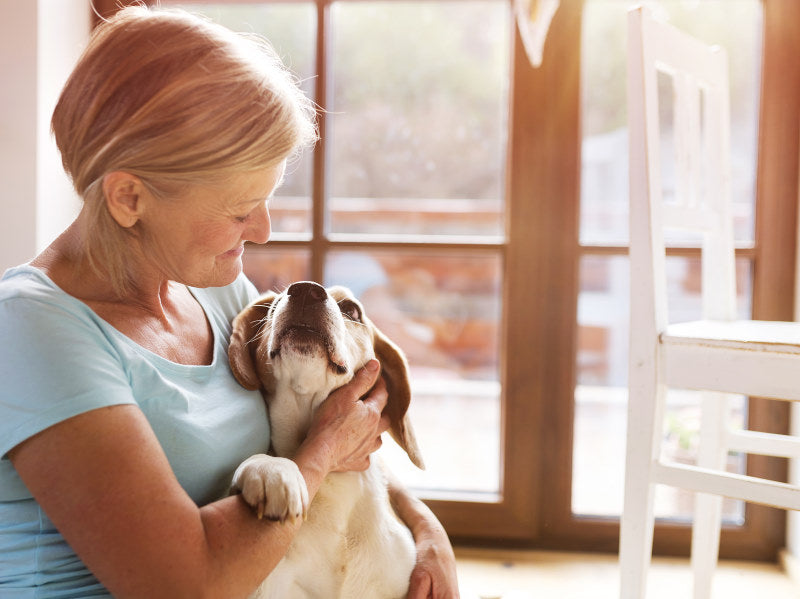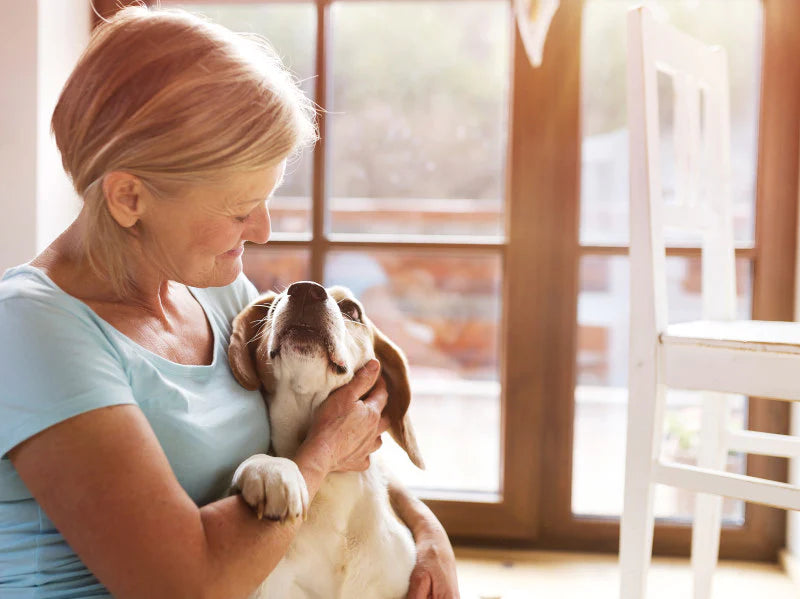Despite their friendly and loyal nature, dogs can feel anxiety and fear. While mild anxiety is natural and even beneficial for canines, chronic stress can have serious consequences. In particular, many canines suffer from separation anxiety. When canines experience severe separation anxiety, this is what happens. Symptoms of separation anxiety include destruction of property, excessive howling, and accidents in the house.
Fortunately, dogs can be helped with their separation anxiety and other types of fear and anxiety. In this article, we’ll discuss how to help your dog deal with anxiety and fear, as well as the causes of separation anxiety, the symptoms your dog may be experiencing, and how to treat them..
The Roots of Canine Separation Anxiety
There are a number of causes for canine separation anxiety. It’s common when something upends the dog’s normal habit or environment, like when they move or when someone close to them dies. However, even dogs who haven’t gone through any major life shifts can develop separation anxiety. Dogs often suffer from separation anxiety due to the following factors:
1.One possible cause of separation anxiety in dogs is that they have not been correctly socialized. Dogs benefit greatly from socialization because it teaches them to engage positively with both canine and human companions.
2. A history of trauma: Pets who have been abused or neglected are at a higher risk of developing separation anxiety.
3: Dogs who are overly attached to their owners may experience separation anxiety when they are removed from their human companions.
4: Dogs that don’t get enough exercise or mental stimulus might get antsy and destructive if left alone.
5: Some dog types, like German Shepherds and Labrador Retrievers, may be more predisposed to separation anxiety than others.
What to Look for in a Dog With Anxiety
Dogs’ physical reactions to their anxiety can range from mild to severe, just as humans’ reactions to stress can. These are some of the most frequently observed symptoms of canine anxiety:
1. Excessive screaming or howling: Dogs suffering from separation anxiety may make a lot of noise whenever they are alone.
2: Destructive actions Dogs suffering from separation anxiety may resort to chewing furniture or digging holes.
3:Anxious dogs, even those that have been house-trained, may relieve themselves in inappropriate places if they feel abandoned.
4: Aggression: Anxious dogs may show aggression toward other animals or humans.
5:Anxious dogs may walk or be unable to relax, which leads to restlessness.
6- Excessive drooling: Anxious dogs frequently exhibit this symptom.
7: Anxious dogs may stop eating and drinking when their masters are not around, which is symptom number seven on the list.
There is an urgent need to handle the problem if your dog shows any of these symptoms of anxiety. Ignoring a dog’s worry can cause it to worsen and cause other behavioral problems that lower the dog’s quality of life.

Soothing Methods for Feelings of Loneliness
Dogs with separation anxiety or any other type of anxiety or fear can benefit from the many methods available to assist them. A few examples of such methods are:
1. The first method is called “gradual desensitization,” and it entails gradually acclimating your dog to being alone. You can do this by letting your dog alone for shorter and longer periods as time goes on.
2. Training your canine using positive reinforcement means rewarding him or her whenever he or she displays desirable behavior. This has the potential to alleviate stress and inspire optimism.
3: Toys, puzzles, and other forms of mental stimulation can help keep your dog busy and engaged, both of which are beneficial in reducing anxiety.
4: Put your canine in a crate or other secure area so they feel more at ease when you’re not there.
5- Medications It is possible that your veterinarian will recommend medications to help with your dog’s anxiety. Medication that is both effective and secure for your dog can be prescribed by your vet.
6—Counter-conditioning and desensitization are two behavior modification methods that can help you and your dog deal with anxiety.
7: Anxiety in dogs can be alleviated with the assistance of a number of calming products, including pheromone sprays and diffusers.
8: The eighth tip is to consult a professional dog trainer or behaviorist if your dog’s anxiety is extreme or if you’re having trouble handling it on your own.
Always keep in mind that your dog is an individual, and the methods that work for one may not be appropriate for another. Finding the best methods for dealing with your dog’s nervousness may require some experimentation.
Conclusion
Many dogs suffer from anxiety and fear, but with the proper techniques and care, these problems can be overcome. The separation anxiety your canine may be experiencing is a real problem, but with time and effort, you can help him or her feel more at ease when you’re not there. Your dog can have a better, healthier existence if you learn to identify the signs of anxiety in dogs, treat the underlying issues that cause the anxiety, and remove the causes themselves.
Dogs are beloved pets for their companionship, loyalty, and warmth, but they can also experience anxiety and dread. Dogs’ anxiety and dread can show up in a variety of ways, from trembling and panting to chewing and biting. Dogs often suffer from separation anxiety, which can make them upset when you have to leave them alone. Whether it’s separation anxiety or just an overall feeling of unease, there are ways to help your dog deal with it.

Dog Anxiety and Its Causes
Anxiety in dogs can be caused by a number of different things, including heredity, upbringing, and the surrounding environment. Anxiety in canines can result from a number of different factors.
1. Unsocialized dogs may be more likely to exhibit anxious or fearful behaviors.
2: Dogs with a history of abuse or neglect may be more vulnerable to developing anxiety and dread as adults.
3-A dog’s anxiety can be triggered by any disruption to his or her regular schedule.
Four causes of anxiety in dogs can be found in their medical history, including thyroid imbalances and neurological illnesses.
What to Look for in a Dog With Anxiety
The signs and symptoms of anxiety and fear in dogs can vary, but some of the most prevalent ones are:
1. excessive barking or whimpering
2. destructive chewing or digging
3. trembling or shaking
5. Reduced hunger
6. Aggression/biting;
7. Retreating/Shying Away;
6. Aggression/biting;
Ways to Overcome Fear of Being Left Alone
Dogs, particularly those who have formed strong bonds with their owners, often suffer from separation anxiety. Destructive habits, excessive howling, and other problems can emerge if your pet suffers from separation anxiety when you’re not around to comfort it. You can assist your dog through separation anxiety by doing the following:
1. First, desensitization, or slowly acclimating your dog to being home alone, can be helpful for lowering separation stress. Begin by leaving your dog alone for short periods of time and gradually increase the time between each outing.
2: Treats and praise are great forms of positive reinforcement to use when your dog exhibits good behavior while you’re gone.
3: Toys, puzzles, and other forms of mental stimulation can help keep your dog busy and engaged, both of which are beneficial in reducing anxiety.
4: Put your canine in a crate or other secure area so they feel more at ease when you’re not there.
5- Medications It is possible that your veterinarian will recommend medications to help with your dog’s anxiety. Your veterinarian can prescribe medication that is safe and appropriate for your dog.
6—Counter-conditioning and desensitization are two behavior modification methods that can help you and your dog deal with anxiety.
7: Anxiety in dogs can be alleviated with the assistance of a number of calming products, including pheromone sprays and diffusers.
8: The eighth tip is to consult a professional dog trainer or behaviorist if your dog’s anxiety is extreme or if you’re having trouble handling it on your own.
Taking Control of Your Anxious Feelings
It’s not just about being alone; some dogs also suffer from general anxiety and dread, which can manifest as symptoms of separation anxiety. Some methods are outlined below for alleviating your dog’s generalized worry and fear:
1. A dog’s anxiety and stress levels can be lowered through regular activity. The feel-good compounds called endorphins are released during physical activity
.
2:Dogs benefit greatly from fundamental obedience training because it helps them feel more in control of their environment and less anxious. Having a well-trained dog can also strengthen the connection between you and your pet.
3: Positive reinforcement, such as treats and praise, given when your canine exhibits excellent behavior, can help reinforce the desired behavior and lessen anxiety.
4-Pheromone sprays and diffusers are just two examples of the many calming items available for canine anxiety.
5: Avoid your dog’s anxiety cues by learning what sets them off and removing them from the picture as much as possible. If your pup gets nervous around other canines, for instance, you may want to steer clear of dog parks.
6-Medications: Sometimes, it’s essential to use medications to help control your dog’s anxiety. Medication that is both effective and secure for your dog can be prescribed by your vet.
7: To modify your dog’s behavior and alleviate his or her anxiety, try behavior modification methods like counter-conditioning and desensitization.
8: The eighth tip is to consult a professional dog trainer or behaviorist if your dog’s anxiety is extreme or if you’re having trouble handling it on your own.

Conclusion
When a dog is experiencing anxiety or fear, it can be difficult to know how to assist them; however, with time and effort, you can learn to work with your dog to overcome their fears and anxiety. It’s crucial to recognize the symptoms of canine anxiety and get help if required. You can help your dog feel less anxious and strengthen your bond with him by making sure he has access to a safe, secure environment, plenty of exercise, positive reinforcement, and mental stimulation.




Add comment